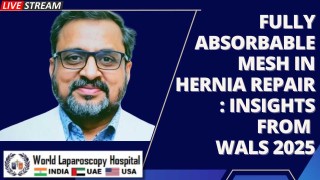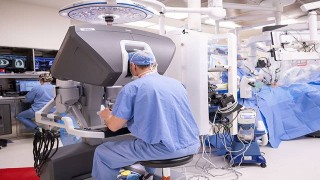Da Vinci Robotic Repair of Bilateral Recurrent Hernia Surgery
Add to
Share
106 views
Report
1 month ago
Description
Recurrent hernias present a unique challenge in surgical practice, especially when they occur bilaterally. Patients who have undergone prior hernia repairs often face significant scar tissue formation, anatomical distortions, and weakened tissue planes. Traditional open or laparoscopic methods may pose difficulties in these cases due to limited access and visibility. In such scenarios, Da Vinci robotic-assisted surgery has emerged as a highly advanced, minimally invasive technique offering precision, safety, and faster recovery. Understanding Bilateral Recurrent Hernia A bilateral recurrent hernia occurs when hernia defects reappear on both sides of the groin or abdominal wall after previous surgical repair. Recurrence may result from multiple factors such as: Tension on the original repair site Inadequate mesh placement or fixation Infection or poor tissue healing Lifestyle factors like obesity, chronic cough, or heavy lifting These conditions not only increase surgical complexity but also significantly impact the patient’s quality of life due to chronic pain, discomfort, and risk of complications. Role of the Da Vinci Robotic System The Da Vinci Surgical System provides surgeons with enhanced three-dimensional vision, greater dexterity, and superior precision compared to conventional laparoscopy. Its wristed instruments allow 540° rotation, mimicking natural hand movements but with tremor filtration and unmatched stability. When repairing bilateral recurrent hernias, the robotic platform offers several advantages: Clear Visualization: High-definition 3D imaging enables precise dissection of scarred and previously operated tissue planes. Fine Instrument Control: Robotic wristed instruments allow delicate handling of tissue and accurate mesh placement in areas of distorted anatomy. Reduced Risk of Nerve Injury: Enhanced precision minimizes inadvertent trauma to vital structures. Simultaneous Repair: Both hernias can be addressed in one sitting without extending incisions or compromising safety. The Surgical Procedure Anesthesia & Positioning – The patient is placed under general anesthesia in a supine position. Port Placement – Small robotic trocars are inserted strategically to provide access for both sides. Adhesiolysis – Scar tissue from previous surgeries is carefully dissected under magnified vision. Hernia Sac Reduction – The recurrent hernia sac and contents are reduced back into the abdominal cavity. Mesh Placement – A large, biocompatible mesh is positioned to cover both defects, ensuring wide overlap and fixation to reduce the risk of another recurrence. Closure & Recovery – The ports are removed, and the patient typically recovers quickly due to the minimally invasive approach. Benefits for Patients Smaller incisions and minimal scarring Reduced postoperative pain compared to open repair Lower recurrence rates due to accurate mesh fixation Faster return to normal activities and work Shorter hospital stay and fewer wound-related complications Conclusion Da Vinci robotic repair of bilateral recurrent hernia represents a significant advancement in modern surgery. By combining the minimally invasive benefits of laparoscopy with the precision of robotics, this technique ensures safer dissection in complex recurrent cases, more secure mesh placement, and improved patient outcomes.
Similar Videos






